| |||||||
| Search Forums |
| Advanced Search |
| Go to Page... |
 |
| Search this Thread |  74,045 views |
| | #31 |
| BHPian | Rajgir - A bried context The city of Rajgir has witnessed history that most of the cities can only dream of. Rajgir finds mention in Ramayana, Mahabharata and was capital of Magadh till the time of Ajatshatru (6th century BCE) who is identified with moving the capital from Rajgir to Patliputra. Rajgir is surrounded by five hills (some text refer 7 hills and the names differ from text to text) – Ratnagiri, Vipalachal on the east and Vaibhargiri, Swarngiri, Udaygiri on the west. I have taken a video that starts with Ratnagiri and then moves to Vipalachal, Vaibhargiri, Swarngiri, and Udaygiri (which is almost not visible due to it’s depth from the place where the video was taken). In Ramayana Rajgir has been referred to with various names. In Ramayana it is referred to as Vasumati probably owing its origin to the mythical king Vasu, son of Lord Brahma. The foundation of the city is ascribed to him. In Mahabharata Coming forward in time, during the great war of Kurukshetra, Brihadratha, it is said, established himself and became the progenitor of Brihadratha dynasty named after him. As per Vayu Purana, the capital of Magadh was Rajgir during the historic battle of Kurukshetra. The Vayu Purana states that Magadh was ruled for 1000 years by the kings of Brihadratha dynasty. After which Magadh was ruled by Pradyota dynasty for around 150 years. There are various legends associated with Jarasanga (son of Brihadratha and brother in law of Kansa – king of Mathura). It is believed that Krishna was pushed to Dwarka (from Mathura) to avoid incessant attacks by Jarasangha who was considered to be one of the most powerful kings of his time. Krishna earned the title of Ranchod for moving to Dwarka. Finally Krishna visited Rajgir along with Pandavas and got Jarasangha killed in a duel with Bhima. However the Brihadratha dynasty continued to rule Rajgir. In Contemporary History Coming still further in time by about 1200 years, after Pradyota dynasty, Shisunaga dynasty followed in around 7th century BCE. King Bimbisara ruled Magadh and his son Ajatshatru is credited with moving the capital to Pataliputra. And this is when Rajgir and Magadh start with their contemporary history. Rajgir is one of the holiest city of Buddhists and Jains. Buddha Buddha first came to Rajgir after leaving Lumbini in his quest for enlightenment. King Bimbisara was ruling Magadh then. When Buddha left Rajgir to find enlightenment elsewhere, he had promised to Bimbisara that he will return back. And Buddha, after forming the Sangha and giving his first cermon at Sarnath came to Rajgir where he gave his second cermon. His visit was also marked by conversion of two Brahmins – Sariputra and Maudgalyayana who became the two foremost disciples of Buddha. Both of them belonged to a near by village – Nalakka (identified with Nalanda). Buddha spent many years in Rajgir and His association with Rajgir, Bimbisara and his son Ajatsatru is widely written/recognized in history. Mahavir It doesn’t stop here. Vardhaman, later known as Mahavira – the last (24th) Tirthankara, also spent many years in Rajgir. It is believed that Mahavir spent 14 Chaturmaas in Rajgir. He was born in Vaishali but gave his first sermon on the Vipalachal hill at Rajgir. Today all five hills have Jain temples (26 in all). To be continued… |
| |  ()
Thanks ()
Thanks
|
| |
| | #32 |
| BHPian | A day at Rajgir– I As always we couldn’t keep the promise of waking early. We started our day 8:30. While finishing breakfast it was already 9:15. We were first to visit the Vsihwa Shanti Stupa at Ratnagiri hill. On the way we stopped at a site that has been identified as a Jail where Ajatshatru had confined his father Bimbisara. Apparently Ajatshatru was not very happy about his father squandering money on Buddha. There was a care taker at this place and he told us how Bimbisara met his end and that he was a great follower of Buddha. Ajatshatru, after the death of his father, realized wisdom and became a follower Buddha too.     We then continued our journey towards the Ratnagiri hill.  Thankfully there is an aerial ropeway (Rajjumarg as Bihar Tourism calls it) to reach the top of the 400 meter high hill. The ropeway provides some nice views of the hills around. It is around 8 minutes one way.   The Vishwa Shanti Stupa is a beautiful monument. There’s a long legend that our friend Bablu shared with us. Essentially Lord Indra took Buddha to the Heavens while he was preaching on the Gridhakuta and what not. This Stupa is considered to be the personification of that Shakyamuni Buddha who appeared back from the heavens. Essentially it was built by Nichidatsu Fuji 1885-1985 CE (founder of Japanese Nipponzan-Myohoji Buddhist sect). The following picture has the details. 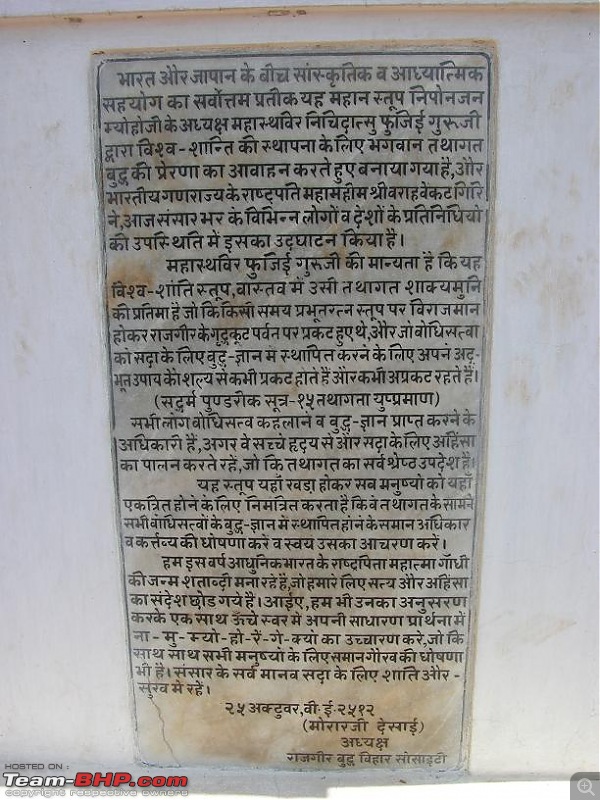  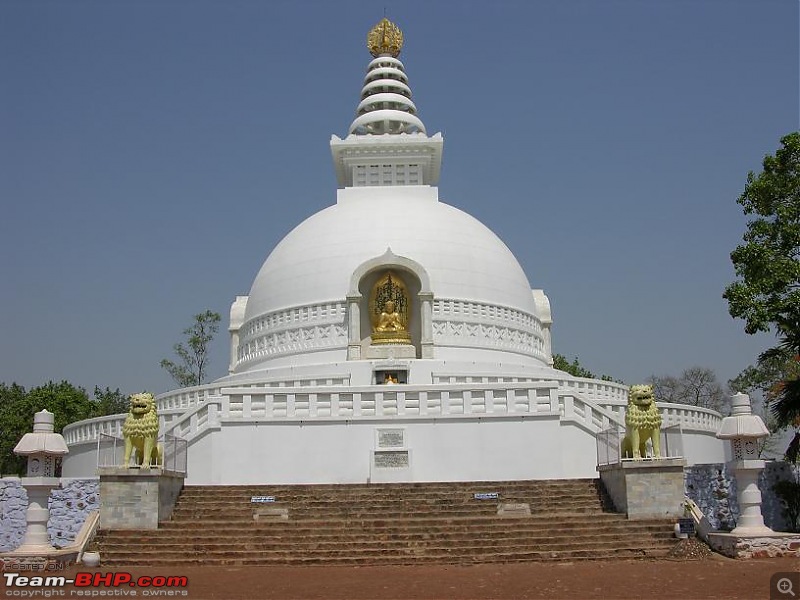 There are four such statues of Buddha on the four sides of the Stupa. These statues are made of pure gold and denote four phases of His life – birth, enlightenment, preaching and mahaparinirvana. There are four such gates on four sides of the Stupa.  There is a community hall inside the Stupa that opens only when the Buddhist monks are in Rajgir during Buddha Purnima. Adjacent to the Shanti Stupa is a Japanese temple dedicated to Saddharma Pundarika Sutra (also known as Lotus Sutra). The temple express this dedication by continuous chanting of Om Nam Myoho Renge Kyo. The mantra Om Nam Myoho Renge Kyo was revealed by Japanese Buddhist teacher Nichiren in 1253 CE and it literally translates to Devotion to the Law of the Lotus Flower Scripture. Nam Myoho Renge Kyo are Japanese words but chanted like Sanskrit mantra. That’s because, originally the Saddharma Pundarika Sutra was in Sanskrit or Prakrit and then translated to many other languages. 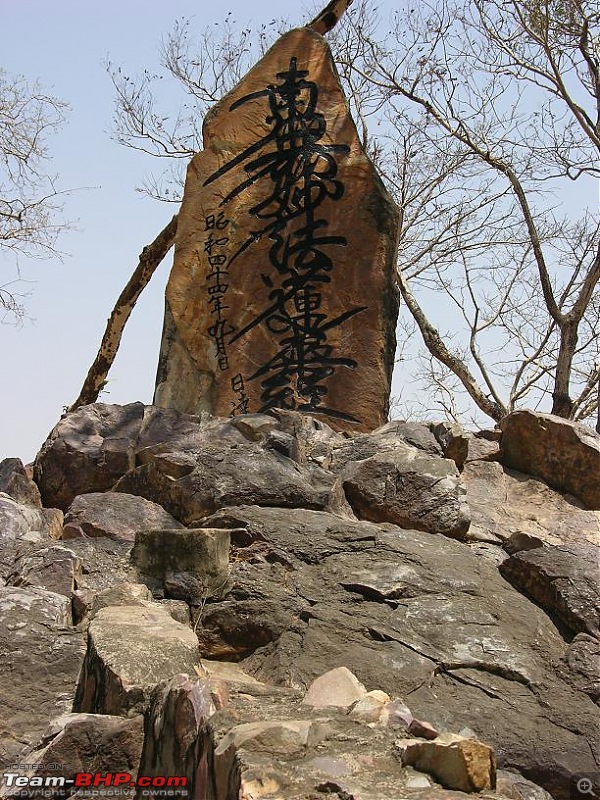  There is a nice video of the chanting of this mantra uploaded by the YouTube user indiajiva. There’s a Stupa built as well to mark the creation of Saddharma Pundarika Sutra by Buddha at the Gridhakuta hill. The details of the Stupa are described in the picture below.  And the Stupa…  But wait. Why all this at Ratnagiri? Didn't all this happened on Gridhakuta? Yes it did. However, there’s no space on Gridhakuta and the Gridhakuta hill (as I said, it’s an extension of Ratnagiri hill) is archaeologically very rich to allow any new construction. The Indian tourists not realizing this, visit only the Ratnagiri hill. I will strongly recommend that you trek to the Gridhakuta hill. Gridhakuta – the seat of Buddha as seen from southern tip of Ratnagiri.  To be continued... Last edited by akbaree : 25th May 2009 at 09:17. |
| |  ()
Thanks ()
Thanks
|
| | #33 |
| BHPian | A day at Rajgir– II Gridhakuta Buddha has stayed in various places in Rajgir but Gridhakuta was his favorite hangout. Buddha preached at Gridhakuta for almost 12 years and is said to have formulated the three main Sutras of Mahayana Buddhism – Saddharma Pundarika Sutra (also know as Lotus Sutra), Prajna-Paramita Sutra, and Surangama Samadhi Sutra. The first two Sutras form the heart of Mahayana Sutras. Buddha use to meditate sometimes in a cave on this hill. There even used to be a monastery on the hill. So we start our trek to Gridhakuta hill. It is mid noon and the scorching sun is merciless.   My aunt is struggling for the first time. The heat has started taking its toll on her.   The original trek was constructed by Bimbisara.  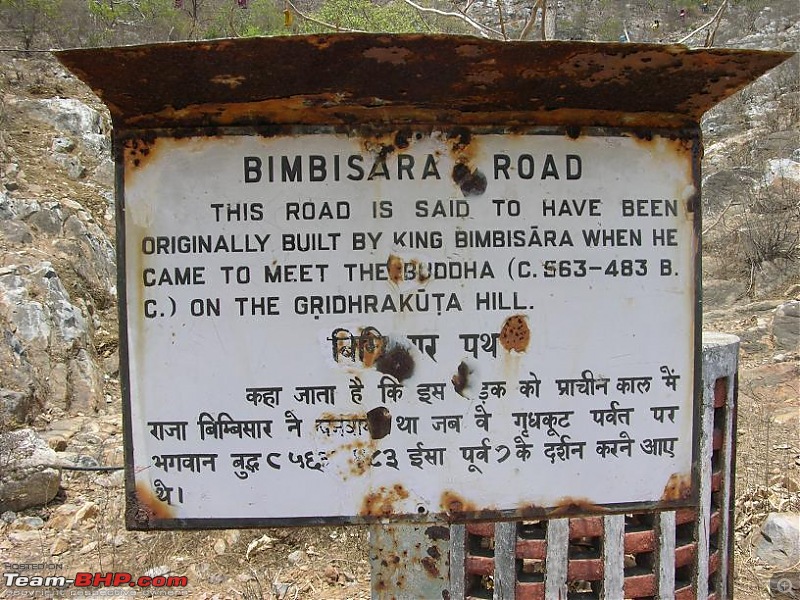 The peak is just about to come  As you approach the Gridhakuta peak, you come across two caves…  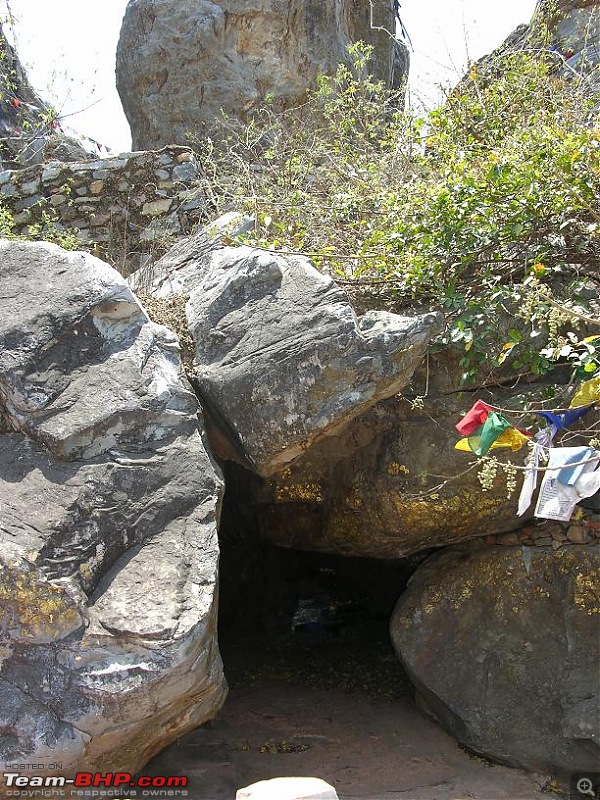 Then almost at the peak, you will come across the remains of the monastery…   The last leap 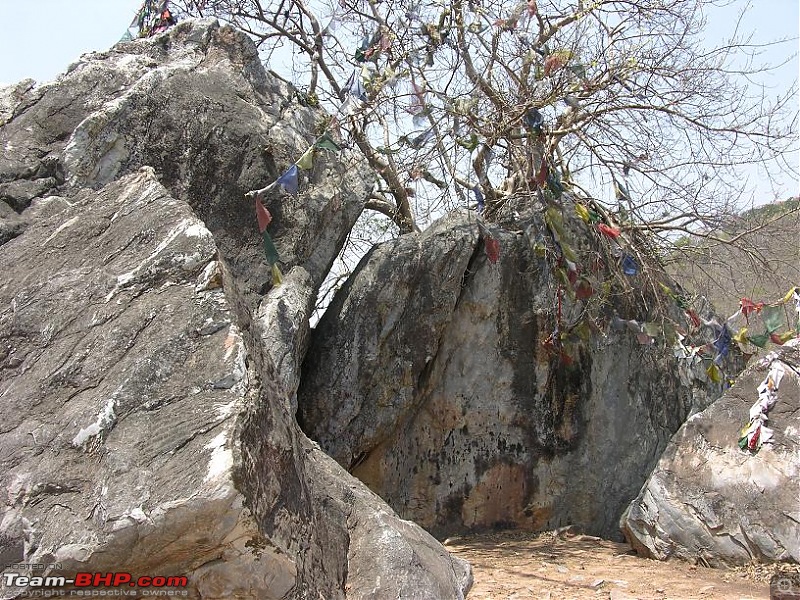 And finally I am delighted to discover Bodhisattva Anant…  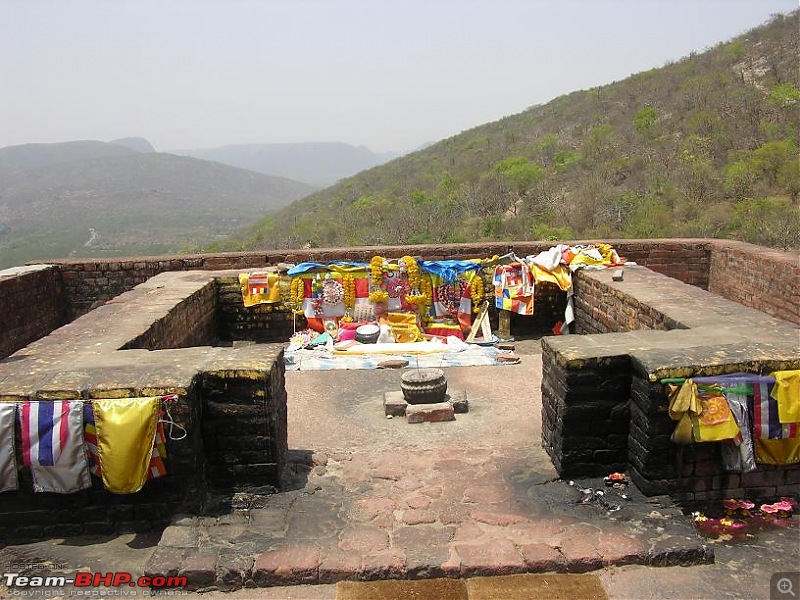 A picture borrowed from wiki  You can get down to a verandah like space...     And we then start our journey down the hill. After reaching the foothill, two half liter thumps up down the throat and I get my second Gyan. To be continued... |
| |  ()
Thanks ()
Thanks
|
| | #34 |
| BHPian | A day at Rajgir – III Thankfully the chilled cold drink did help a lot in quenching our thirst. After catching some breath we moved to the next leg on day’s agenda. Just couple of hundred meters away is Jivaka Community Center. Jivaka was the renowned physician at the royal court of Magadh during 5th century BCE. 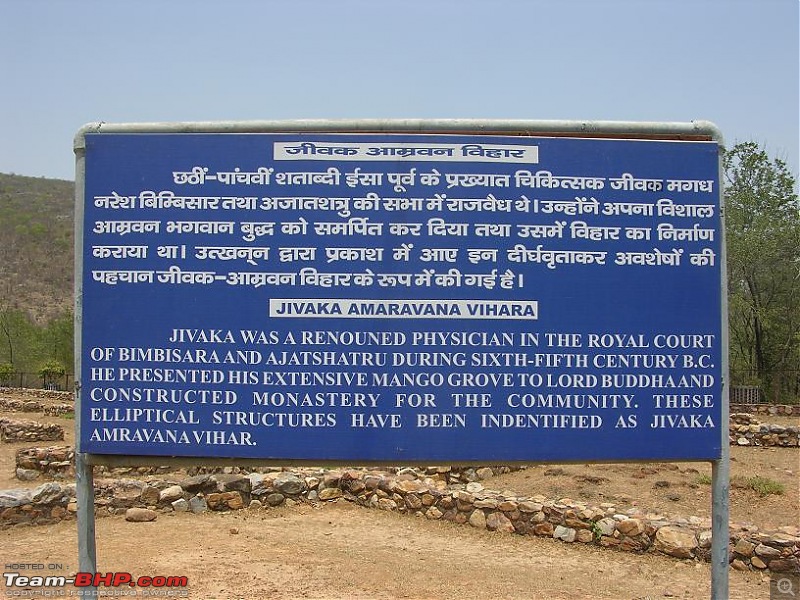 As the placard suggests, there would have been an extensive mango groove around this place which today only has bunch grass.  We then were heading back towards city for Son Bhandar caves.  There are two caves located at the southern foot of Vaibhargiri hill. There are many legends associated with these caves. Some believe the caves have hidden path way that leads to a huge treasure. Some of them feel this treasure belongs to Jarasangh and yet other believe the treasure belongs to Bimbisara. More adventurous even believe that the path that leads to the treasure also goes up to Saptaparni Caves which are situated at the top on the northern side of Vaibhargiri hill. But historians have only been able to attribute the caves to around 3rd or 4th century CE built for Jain ascetics.  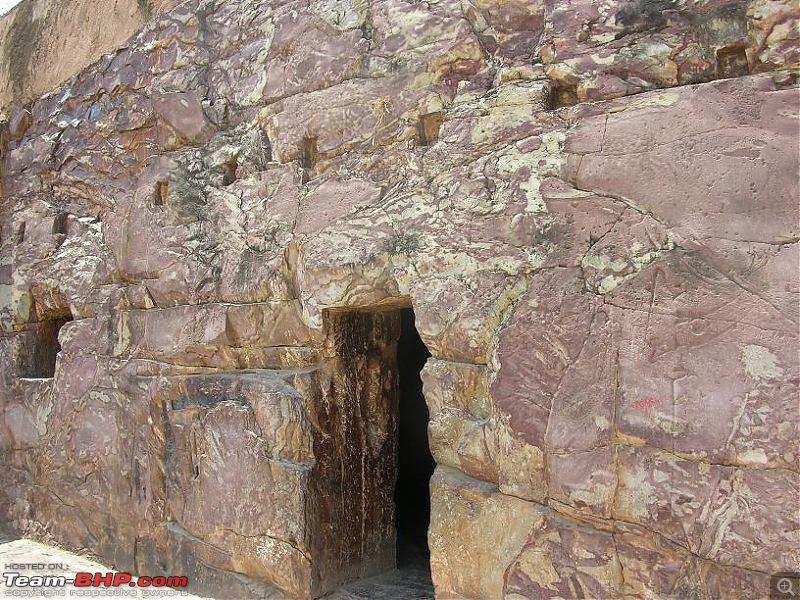 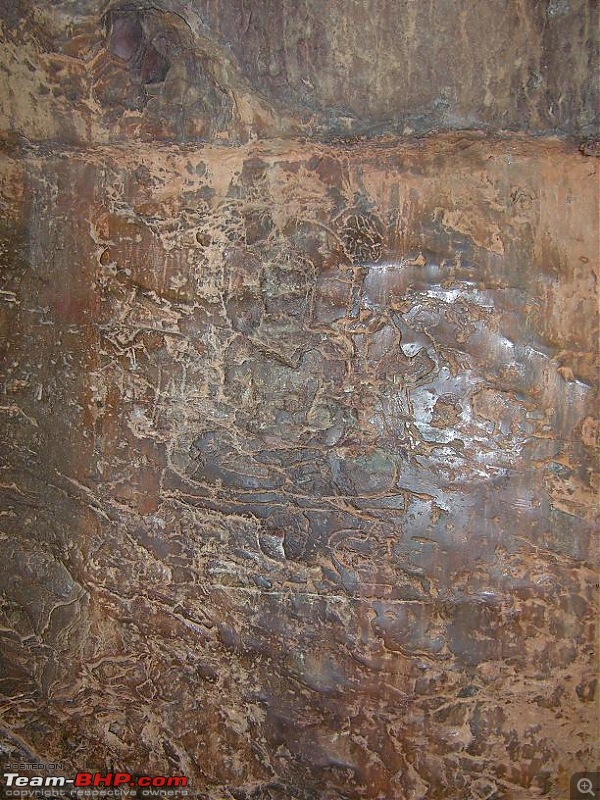  Some idols were discovered from this place but now they have been moved to Nalanda ASI museum. Actually by now we are tired of listening this – most of the import ant finds have been moved to Nalanda ASI museum. We however look forward to see those finds when we visit Nalanda tomorrow.  The adjacent cave has stone engravings of Jain Tirthankaras. Our guide informed us the names of each of the Tirthankaras engraved here but I am unable to recall now.     During the Gupta era, to this second cave, an additional storey was constructed. But I believe it was not properly thought through. The second floor made the cave to collapse over a period of time.   It was not almost 2:30 pm. We decided to go back to the hotel and take rest for an hour or so. As we were headed back, we came across this structure called Maniyar Math. I haven’t read much about it anywhere except that there were some marvelous finds at this site and you guessed it right – the finds are at Nalanda ASI museum. The structure excavated so far belongs to 1st century CE. There might have been earlier structures at this site but only further excavation can enlighten us.   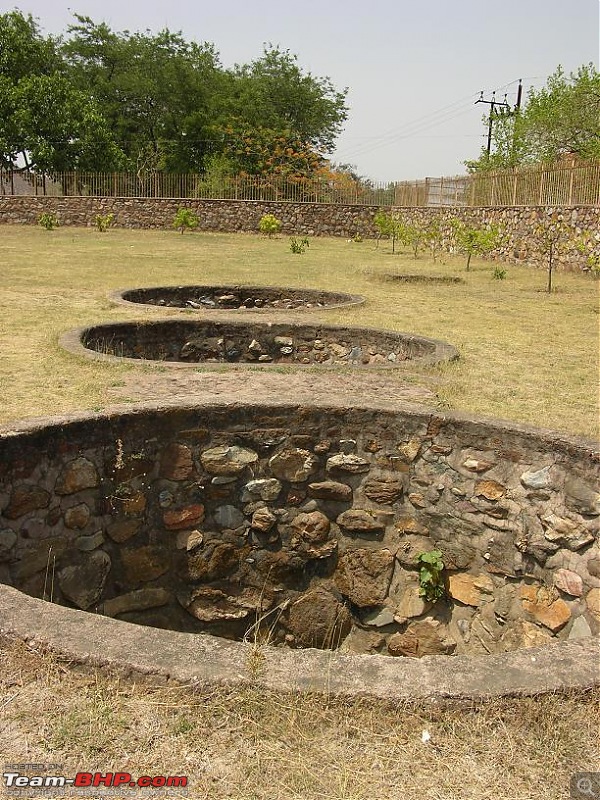  If all of you were wondering what stucco images look like, here is the first sight although almost denigrated with time. 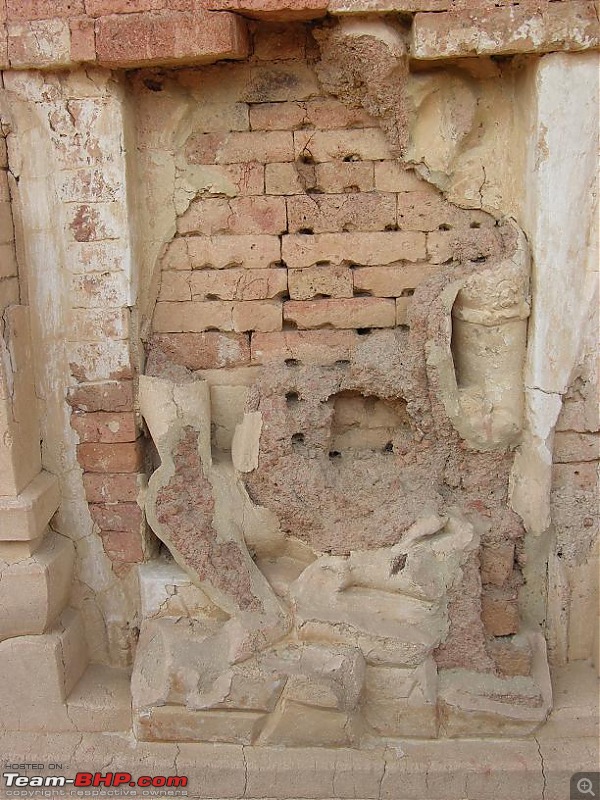 All the images that are mentioned in the placard have disappeared with time. They have not been stolen but have denigrated in absence of proper care. The last one is also waiting to disappear. I have no idea what our archaeology department is doing about it? To be continued… |
| |  ()
Thanks ()
Thanks
|
| | #35 |
| BHPian Join Date: Dec 2007 Location: Bangalore
Posts: 750
Thanked: 97 Times
| Nice going. But IIRC, the mahabharata king is Jarasandha. |
| |  ()
Thanks ()
Thanks
|
| | #36 | |
| BHPian Join Date: Oct 2008 Location: Delhi/Cuttack
Posts: 392
Thanked: 206 Times
| Quote:
 Delightful writing. Please do to continue. Pleasure to read and pleasure to learn. Delightful writing. Please do to continue. Pleasure to read and pleasure to learn. Methinks that when i do have a kid, i will force him to read this, and then will jabardasti take him to these places, so that whether he/she wants or does not want; he/she still learns this country's history  | |
| |  ()
Thanks ()
Thanks
|
| | #37 | ||
| BHPian |
Arindmay you are correct. You can also see that the placards name him as Jarasandha. But for some reason I am used to calling him Jarasangh from the times I used to watch B.R. Chopra's Mahabharat. I will continue to call him Jarasangh in this travelogue. Quote:
Quote:
 . .Last edited by akbaree : 29th May 2009 at 22:41. | ||
| |  ()
Thanks ()
Thanks
|
| | #38 | |
| BHPian Join Date: Dec 2007 Location: Bangalore
Posts: 750
Thanked: 97 Times
| Quote:
By the way my name is Arindam, surname is Ray -> screen name arindamray  | |
| |  ()
Thanks ()
Thanks
|
| | #39 |
| BHPian | |
| |  ()
Thanks ()
Thanks
|
| | #40 |
| Senior - BHPian | WOWW Ananth, Mr detail at his best! Just miss the advy though  Keep it going... |
| |  ()
Thanks ()
Thanks
|
| | #41 |
| BHPian | |
| |  ()
Thanks ()
Thanks
|
| |
| | #42 |
| BHPian | A day at Rajgir – IV After a quick lunch and an hour’s rest, we started the last leg of our day’s agenda at 4:00 pm. Our first stop was the Burmese temple. This temple is the only center for Hinayana studies. There’s almost total consensus among historians that the original Pali Canon (that comprises Hinayana Buddhist texts is the most accurate historical evidence of Buddha’s life and of that period between 5th century BCE and 1st century BCE. 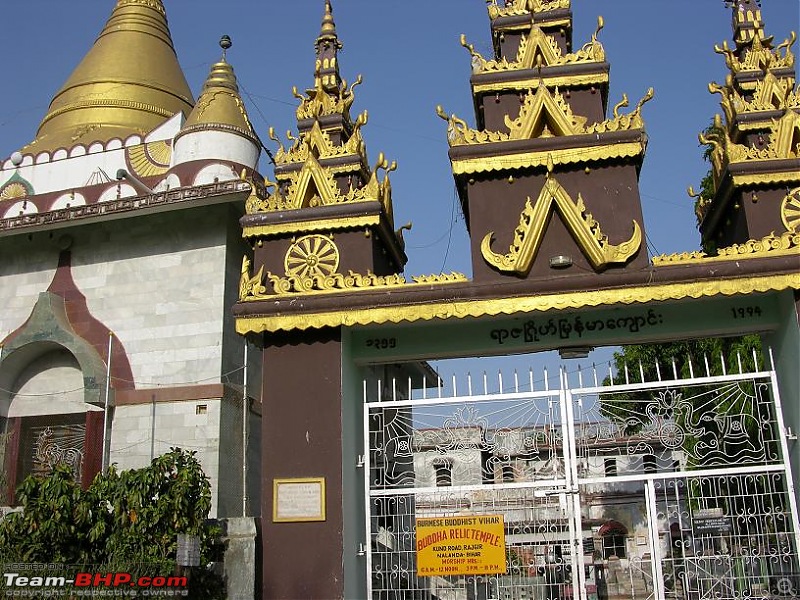 We then decided to visit the Kunds – Hot Water springs. 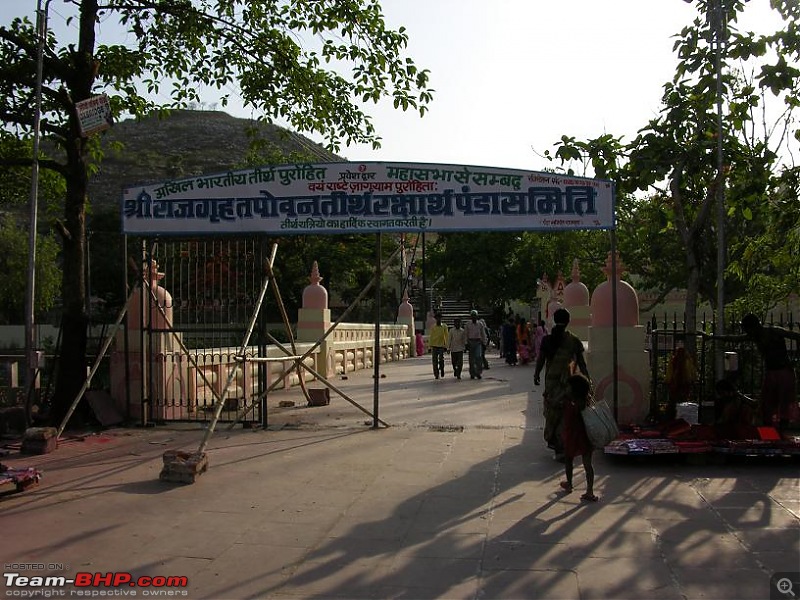 They are located at the northern foothill of the Vaibhargiri hill. TheHot water springs are the most significant religious place for Hindu pilgrims at Rajgir. Hindus visit in large numbers to bathe in these Hot water springs. It is believed that you wash away all your sins as you take bath here. The source of the Hot water springs is somewhere inside the Saptaparni caves situated at the top of Vaibhargiri hill. There are a cluster of temples built around the springs.  These temples have not been dated by the historians. That’s one problem with all Hindu religious sites that we visited on this trip. The present lot of Pandas (Upadhyay Brahmins) at the Kund have migrated to Rajgir in 14th century. So you may believe that the temples were present at least before they moved in. The Kund area has been popular for many centuries as you have a Kund named after most of the historical figures that appeared in Magadh (including Buddha). There’s even a Nanak Kund where Nanak took bath when he passed thru Rajgir. Note: Please beware of these Pandas. They are biggest thugs I must say. I was almost about to have a fistful fight with one of them when other Pandas pacified me and took the erring one away. IMHO we should donate money at such religious places but then if people start putting their hand in your mouth, it becomes just too much to manage. It is believed that the main temple – Laxmi Narayan temple has been constructed on the site of a Buddhist monastery Tapodarama that existed in the times of Buddha.  I wanted to take bath but it was insanely crowded or that’s what I thought. One of the Pandas ensured me that if I can come next day morning at 5:00 I will be able to have a comfortable bath. With that deal done, we left for Venu Vaan or Bamboo Grove as it is called in English.  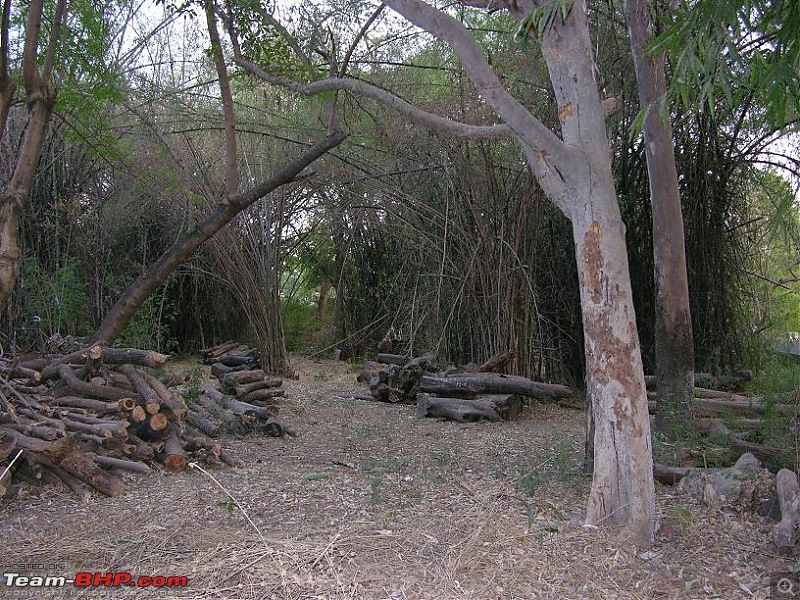  There’s a pond as well. It is believed that Buddha used to bathe in this pond and then go to Gridhakuta for his meditation and preaching sessions.  Of course the pond has been beautified by the ASI.  It was already 6:00 pm and we have two more places left from our day’s agenda. The first one is the marks of the chariot wheels. This is something that I cannot believe but when you visit it, you will remain awestruck. It is really astonishing how these chariot marks have developed in the hard granite rock.  As you can read it, it is believed that these marks are left by a chariot from Mahabharat era. 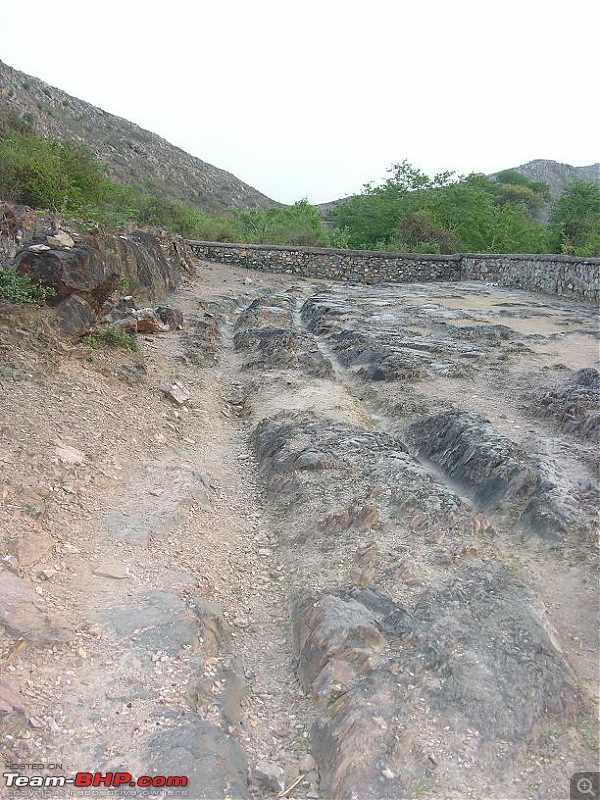  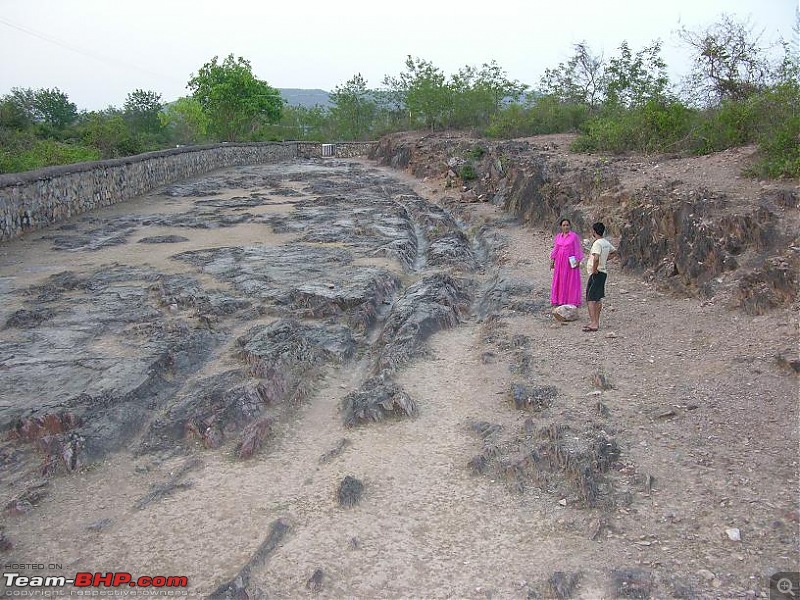 Just next to the chariot marks, the ASI has recently excavated a stupa.  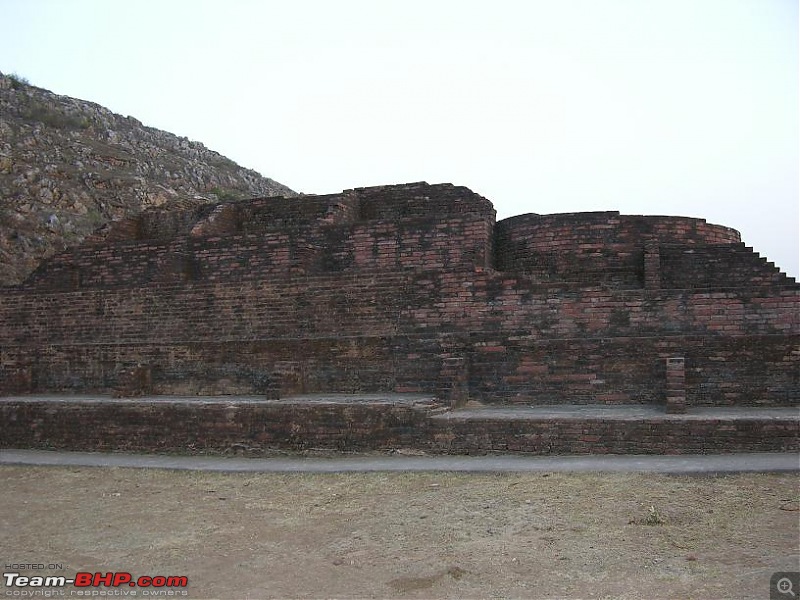   And the last place on our the agenda is the cyclopean wall. This is actually amazing. A wall built in 5th century BCE that was 40 kilometers in length and encircled the old Rajgir city. It was getting dark and though I fiddled with the exposure a bit, the photographs haven’t come out well.   We closed our day after a nice dinner at the Punjab restaurant made to our taste with some elements of Bihari spices. Tomorrow morning I have to wake at 4:00 am to take a bath in the Brahma Kund. I also have plans to trek to the top of Vaibhargiri hill. And we are visiting Nalanda tomorrow which is the seed that germinated this whole trip. To be continued… |
| |  ()
Thanks ()
Thanks
|
| | #43 |
| BHPian | A day at Rajgir – V In interest of my aunt’s health, we decided that she will stay back at the hotel while I take a dip in the Hot water spring and go trekking on the Vaibhargiri hill. The alarm went off at 4:00 am. And of course I disabled it. But I had another one that went off at 4:30 am. I had to wake up. I called the driver and he was ready too. One thing I realized that the day starts in the East really early. I feel we need to have different time zones in India. The east is surely a minimum of half an hour ahead of Bangalore. All decked up we leave for the Brahma Kund. As soon as we hit the road, I am shocked to see an army of people at this early hour. I mean the time is 4:50 am and so many fellows on the streets. You may notice that my camera flashed in the auto mode.  As we approached Brahma Kund, my hope of having a comfortable bath in the Kund kept washing away.   At the entrance…  And the Kund was surrouned with the teaming villagers  My luck really failed me. Yesterday was teej and there were marriages in millions. Whole night the party was on and the villagers were concluding the party with a dip in the Hot water spring before leaving for their homes. But I was determined. And thanks to the Panda, with whom I had stuck the deal yesterday, I was a given room to change. Picture borrowed from wiki  If you think that the picture above looks busy, then you should have been there with me when I went to take a dip. The Kund that hardly measures 16ftx16ft had at least 200 odd people inside it. But let me tell you that it was one of the most wholesome experiences of my life. When you are there you don’t know what caste or creed, men or women is next to you. After the bath I had to rub my way out with hundreds of others who were trying to come down the stairs. The faith leaves you moved. It introduces you with higher meaning in life. After setting the count of sins in my life to zero, I started my trek to the Vaibhargiri hill. Just few meters into the trek I came across Jarasangh ki Baithak.   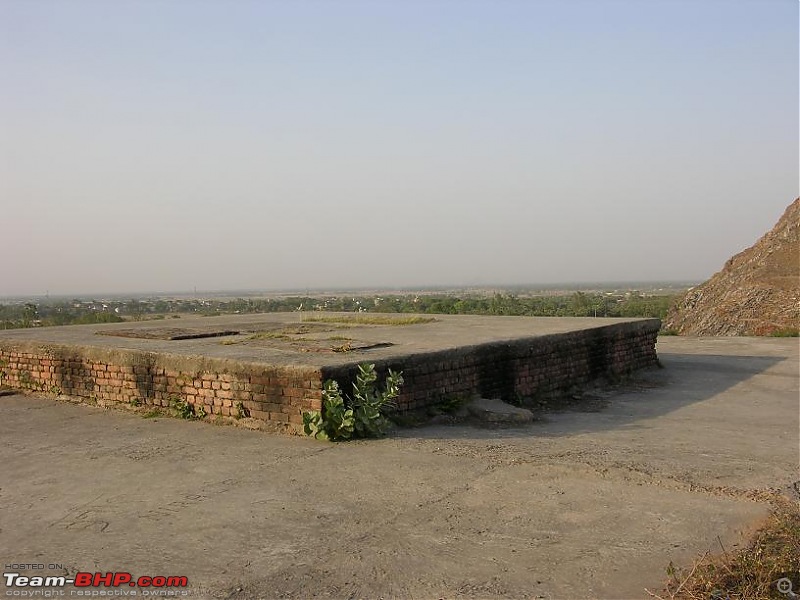 The trek continues…  This man carrying water sells lime juice at the top of the hill. He has to make more than two rounds to get all the stuff upstairs. And he does these rounds daily. 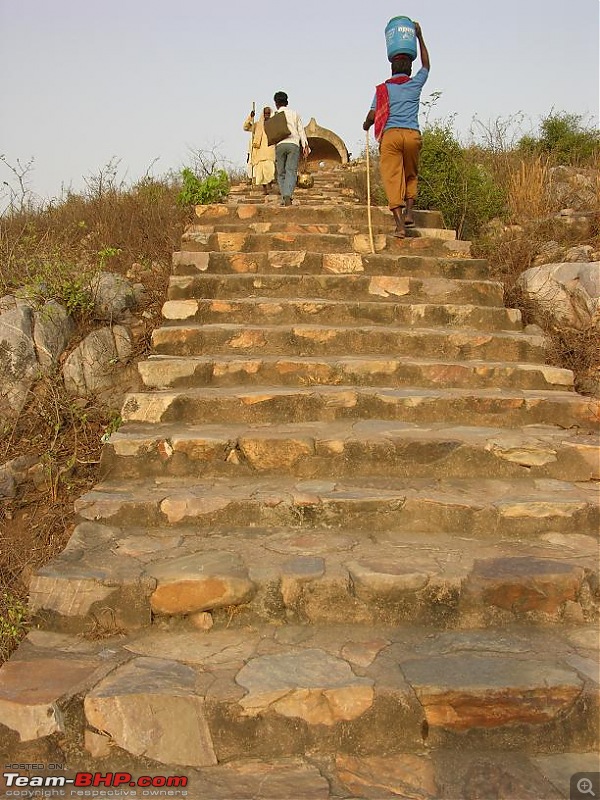 Although it’s bright ahead, the city behind is still waking up. 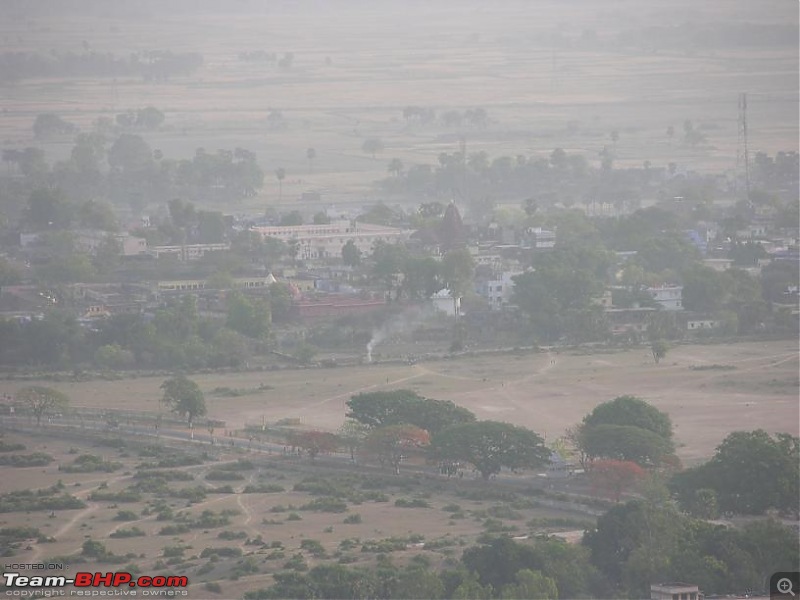 But why am I trekking all the way to the top of this hill? This hill has quite a few ancient (not any more after complete renovation, it is hard to find anything ancient) Jain temples. But more importantly there’s Saptaparni Caves. Saptaparni Caves is very important site. It is believed after around 50 years of mahaparinirvana of Buddha, the first Buddhist council was held under the leadership Maha Kasyapa (another most important disciple of Buddha) at the Saptaparni Caves. The council was arranged by Ajatshatru. It was first attempt to consolidate Buddha’s teaching and begin codification. I had taken the picture below of Tathagat Bungalows (where we stayed) from Saptaparni caves. (I have shared this picture in my earlier post: Arriving at Rajgir.)  The caves   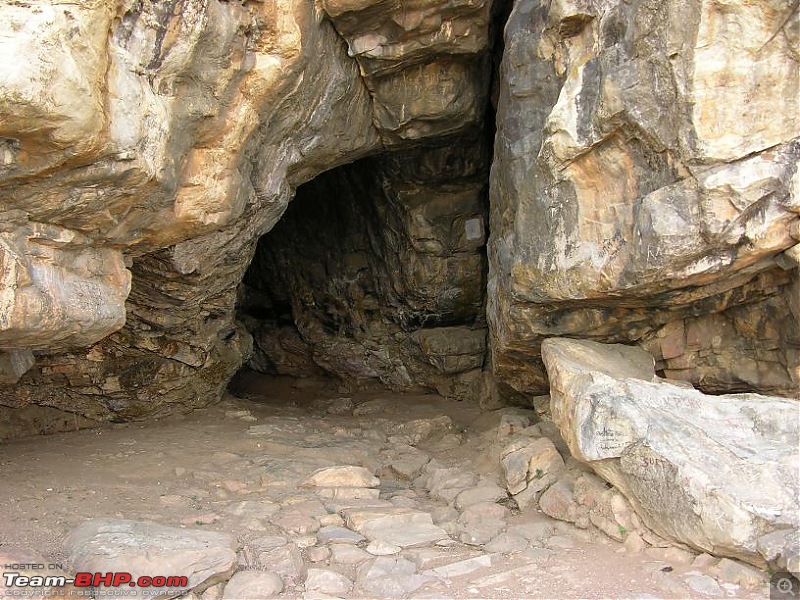 The caves are very deep. I tried venturing inside but for bats I had to abandon my adventure. The priest at the Jain temple also believes that the Caves have a path that leads to the treasure and Son Bhandar caves. While I was having lime juice, a gentleman went past us. Strangely, he had his hair tied above his head, and was wearing jeans and t-shirts. The lime juice vendor informs me that this person is coming here daily for past 6 weeks and meditates deep inside the cave for whole day (returns at around 5:00 pm). Mysticism remains India’s forte. That reminds me that I forgot to mention about a similar ascetic who is meditating in Barabar hills for past 18 months. Milk and nuts is his only diet and he meditates full time. He belongs to Gujarat and his family sends 2-3k rupees every month to the villagers who supply him his quota of milk and nuts. Isn’t it extra ordinary?  Coming back to Jain temples, there’s one Digambar temple and 6 Shwetambar temples. Most of the Jain pilgrims come here from Gujarat and that can be seen from the list of donors as they mostly belong to Gujarat. The temples have the pooja book in Gujarati as well. All the marble work has been done very recently. The idols are all very beautiful and sourced from an artist in Rajasthan. First temple   Second temple  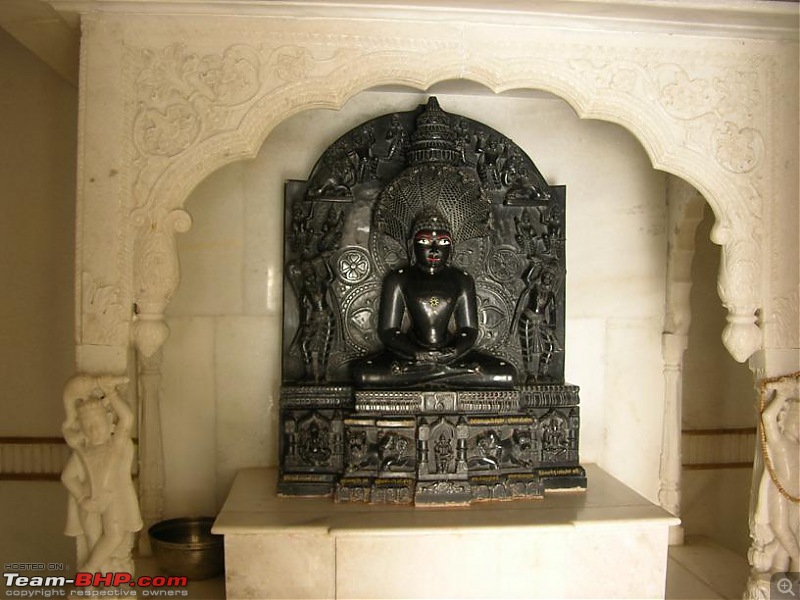 Third temple 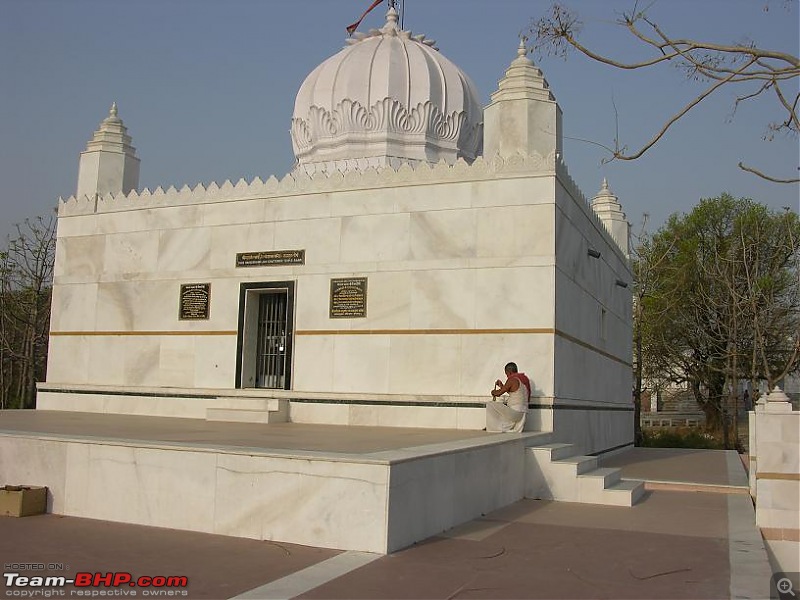  Fourth temple 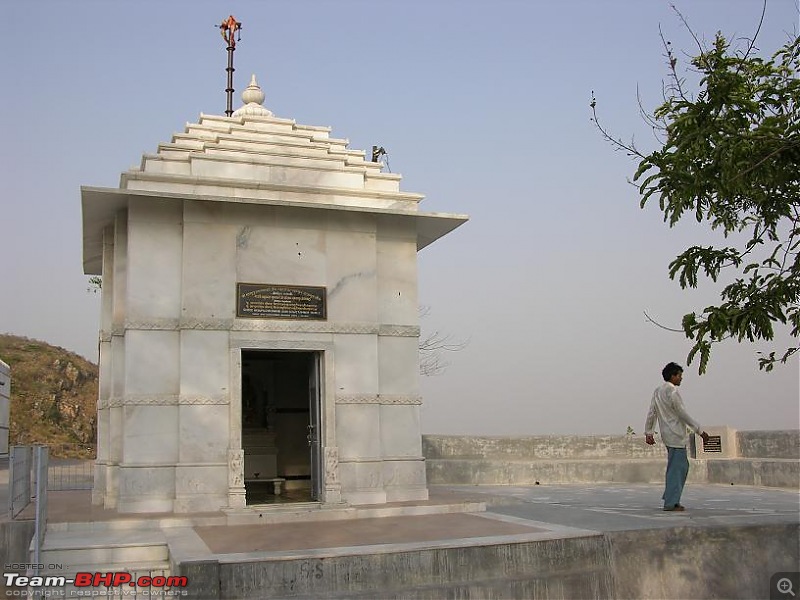 Digambar temple (5th temple) 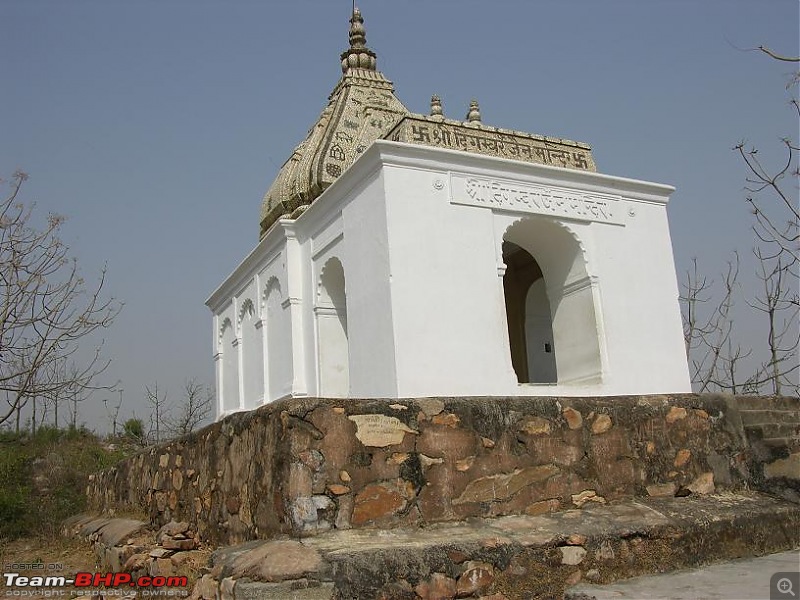 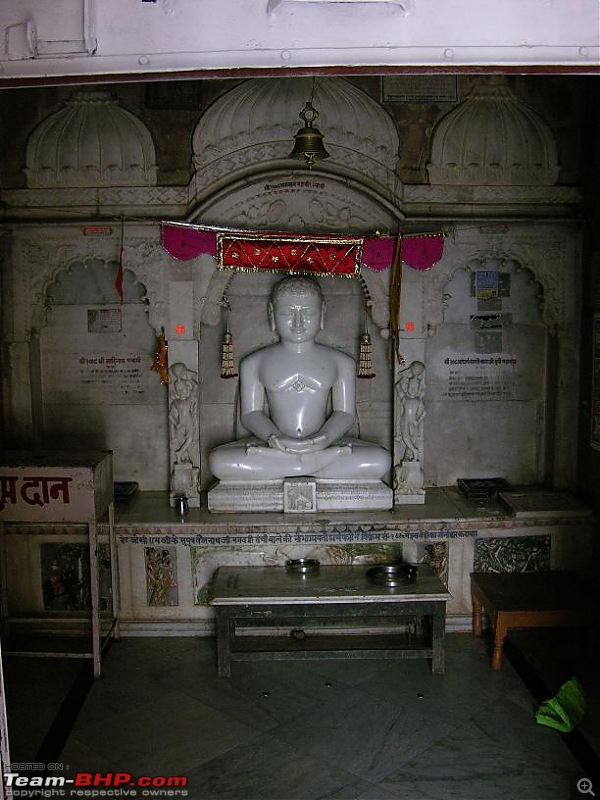 The main temple (6th temple, Sri Munisuvratswami temple) 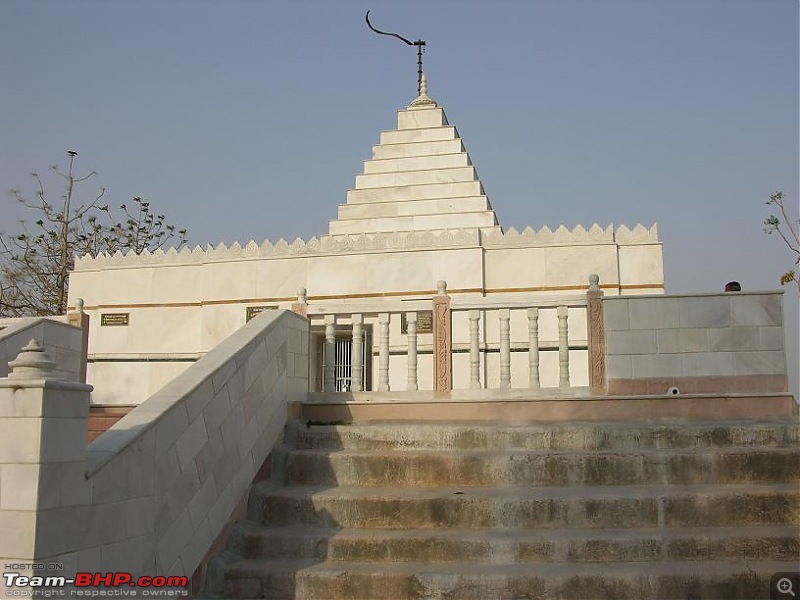  The most important Jain temple on the Vaibhargiri hill is that of Gautam Gandhar (7th temple). It is believed that at Vaibhargiri hill Gautam Gandhar attained Nirvana and the temple is build at the same location.   As mentioned in the placard, the temple is 1.5 kilometer trek from the main temple. The Vaibhargiri hill is really spread out. But the Jain priest is very scared and he instructs me to leave the camera in the main temple locker. He feels that there are fair chances that mugging can happen; so no pictures of the temple. But if you visit this hill, please insist on visiting this temple. It is located in a beautiful surrounding and the fear of robbery is only perceived fear. P.S.: All the priests in the Jain temples atop all the 5 hills are actually Hindu Brahmins. The priest asked me if I am Hindu and I replied in affirmative. I would suggest that you tell them that you are a Jain. That way you can save yourself from these greedy creatures. As soon as they now that you are not Jain, they start their cheap tactics to get money. As they are employed by a Jain institution they know if they do similar thing with Jain pilgrims, they will surely lose their jobs. To be continued… Last edited by akbaree : 31st May 2009 at 01:13. |
| |  ()
Thanks ()
Thanks
|
| | #44 |
| BHPian | A day at Rajgir – VI The two other attractions on the Vaibhargiri hill are an ancient Shiva temple and a Jain Monastery. No ASI board, nothing. The Shiva temple has many legends though. According to one of them, Jarasangh, who was an ardent Shiva devotee, used to offer his prayers at this temple. Of course this legend ascribes the construction of temple to Jarasangh. It could well be true. I asked the priest who was a very old man. Only thing he muttered was – "bahut pracheen mandir hai". He didn’t have a clue. Later, I realized that the temple has no care taker and it lies abandoned to the mercy of such self appointed care takers. It could have been that the temple existed from very ancient times but could have been renovated subsequently. I can see at least three layers of construction apart from some renovation by the ASI department.  I am not sure how the people, at a minimum of 1700 years back would have brought these huge monolithic stone pillars here. It is most certain that these pillars were carried here as there is no evidence of any quarry or this kind of stone on the hill.   Scattered pillars around indicate large scale devastation or that the renovation was never completed. 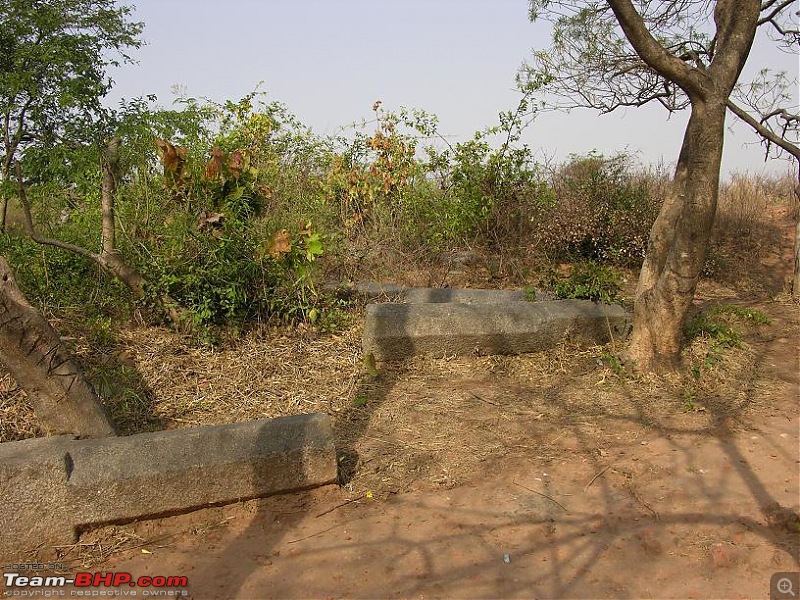 Just adjacent to Shiva temple is a Jain monastery. The monastery might have come up during 4th and 7th century CE. Again no ASI board, nothing. 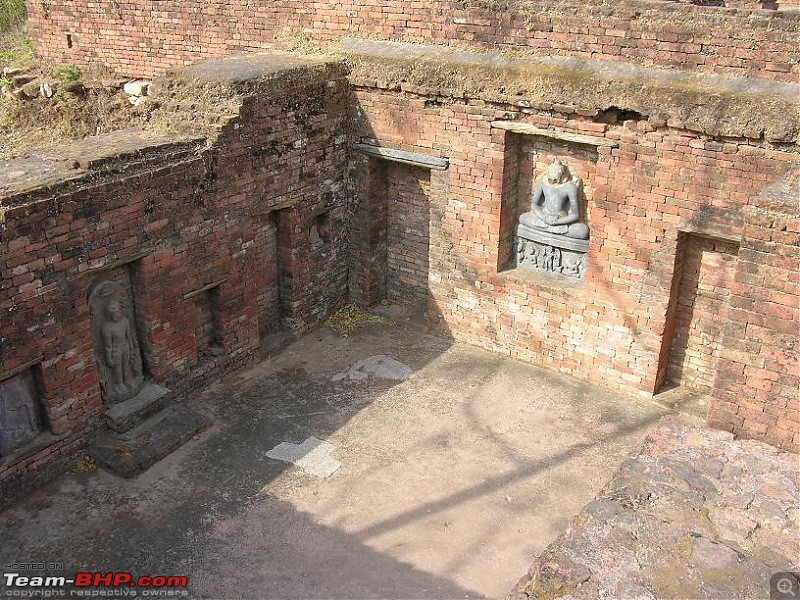   At 9:00am it was time to head back. Today we are going to Nalanda and Pawapuri. In my 45 minutes of descent, I didn’t find any pilgrim, except one couple who were climbing hand in hand discussing which camera mobile to buy. Love is strong and you need it to beat the hostile sun which at 9:45am felt as hot as a furnace. Even the Kund area bore a deserted look. Not a single soul at Brahma Kund and Laxmi Narayan temple. 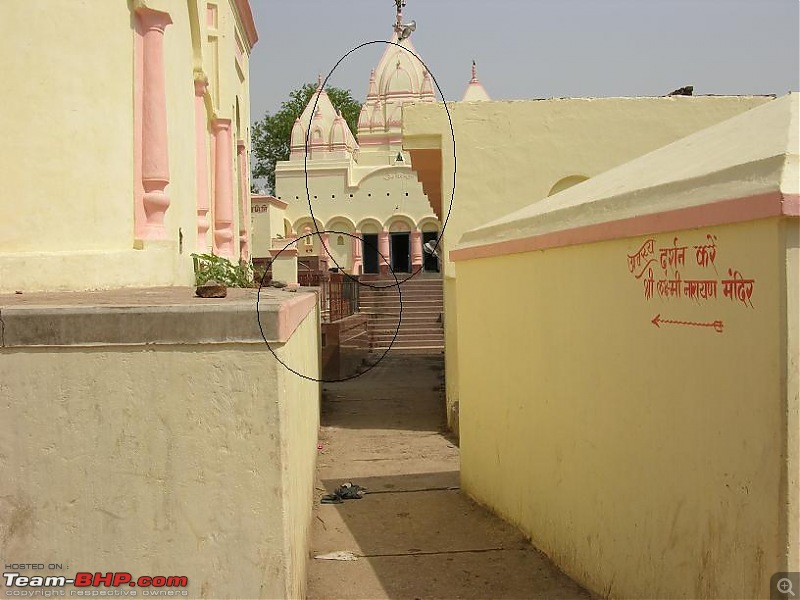 To be continued… |
| |  ()
Thanks ()
Thanks
|
| | #45 |
| BHPian | One of the world’s most ancient University – Nalanda Mahavihara I had already called our friends at Punjab Restaurant to keep the breakfast packed. Nalanda is about 16 kilometers from the town of Rajgir. At 10:15am, Nalanda was 6 kilometers. 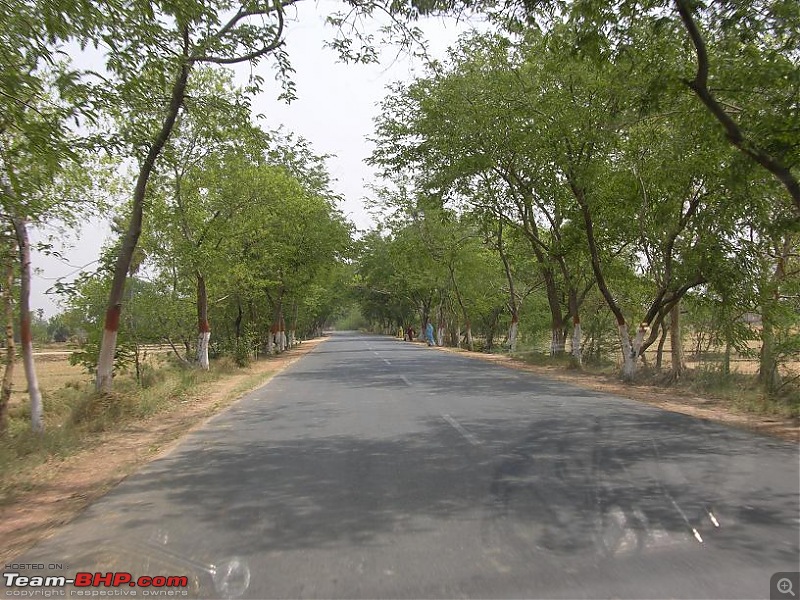 Reference: In my case, the book: Art and Architecture of Nalanda by G.C. Chauley, provided immense insights. The author has worked as the curator with Nalanda Archaeology museum for long time. I enjoyed the book till the last word. It has an interesting chapter on Religious and Iconographic Developments that sets the religious background in which the Nalanda Mahavihara flourished. And is written with just write amount of technical details so as to maintain interest and still provide the details.  I will keep referring to this map as I write about Nalanda. If you refer to the map, 1a and 1b (facing north) and 1, 4, 6, 7, 8, 9, 10, and 11 (facing west) are all monasteries. 2, 3, 12, 13, and 14 are temples. Arriving from Rajgir The empty shops that you see in the picture above do brisk business during the season (between October and March).  As we enter the Nalanda Mahavihara – the epitome of Indian progressivism.  The person with my aunt is our guide. He has done his doctorate from Magadh University. He, along with his class mates, has written a guide book that sells for 40 bucks. The brief history of Nalanda: Please do read the stone inscription. It has a lucid rendering. One thing that’s good about Nalanda is that you have properly marked boards that will keep you well guided. 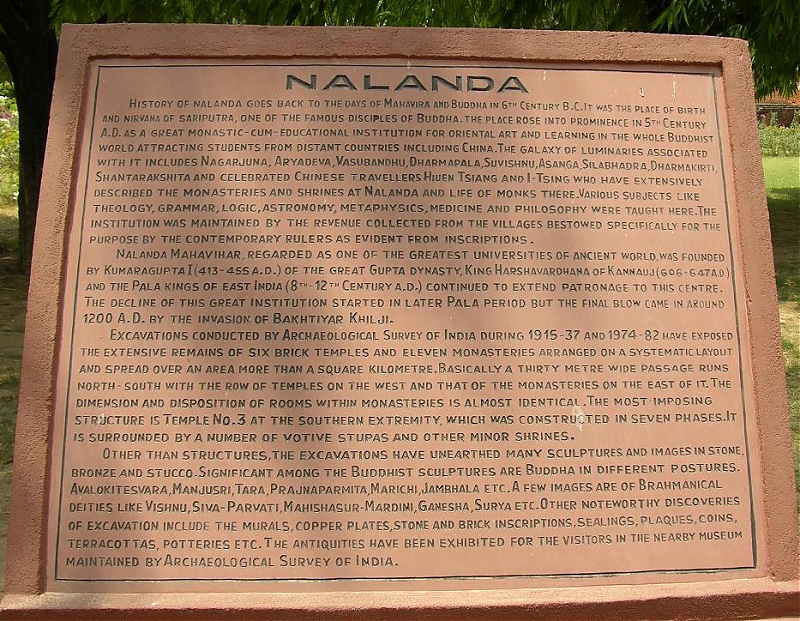 My Understanding Both the foremost disciples of Buddha – Sariputra and Maudgalyayana were born in Nalanda. Religious scriptures suggest that Nalanda was often visited by Buddha and Mahavira where they give various discourses. First structure to come up at Nalanda would have been a small Caitya over corporeal remains of Sariputra. It remained that way for couple of centuries until Ashoka built a Stupa to honor Sariputra’s relics (refer #3 in the map). The history is again absent for almost 600 years. According to presently available evidence, the foundation stone of Nalanda Mahavihara was laid by Kumaragupta – I (414-455 century CE). - Seals discovered from Nalanda - Accounts left by Hiuen Tsang (Chinese Traveller) and Prajnavarman (Korean Traveller) Post which, there has been continuous patronage to the Mahavira till early 13th century when it was sacked by Turk Muslim Invader – Bakhtiyar Khilji. During the hey days, Nalanda Mahavihara remained prime seat for Scholars in the Indian subcontinent and attracted students from almost every country in present day Asia. It also remained unchallenged for its studies in Mahayana Buddhism. Some of the Kings/Dynasties that gave patronage to Nalanda Mahavihara (in that order)… Gupta Dynasty Sasanka of Gauda Puranavarman of Magadh Harsa of Kanauj Pala Dynasty The study of the students in the monasteries included 4 Vedas, 6 Angas, 10 granthas, 14 Vidyas, 18 Silpas, and 64 kalas. The other subjects included philosophy (course in Mahayana Philosophy was mandatory), metaphysics, grammar, logic, medicine, arts, crafts, etc. The sack of Nalanda as recorded by Persian historian Minhaz in his work Tabaquat-i-Nasiri: “Ikhitiyar Ud-din-Bakhtiyar Khilji went o the gate of the Vihara with only two hundred horses and surprised the enemy. Great plunder fell into the hands of the victor, most of the inhabitants of the place were Brahmanas with shaven heads. They were all put to death.” The original area that marked the Nalanda Mahavihara was around 10 kilometers North to South and around 5.5 kilometers East to West. The present excavated area measures 1600 feet North to South and 800 feet East to West. ****************************************** Coming back to the travelogue, as we entered the first gate of this great monument, our guide declares in a very poetic way: there were three libraries in the Mahavihara – Ratna Sagar, Ratna Ranjika, Ratna Dadhi. Ratna Sagar was famed to be having 9 storeys. Then in the same breath he explains that none of the three have been discovered yet.  I will first take you to the temple 3. Temple 3 is the oldest structure excavated so far. It is the Sariputra Stupa that was originally constructed by Ashoka but has been expanded 7 more times. The excavated remains confirm 7 layers of construction belonging to different periods. Picture borrowed from wiki (I have missed taking the front of the Stupa) Front of the Stupa (taken from North)  To our surprise, we are informed that we are not allowed anywhere in the temple site 3. We need special permission to enter the area as it remains closed to general public. However the security guy was observing us reading books and making notes and when we approached him with our request, he hesitatingly obliged. So here we enter the temple site 3. West side of the Stupa  Pictures taken from South     Water duct of monastery 1b can also be seen The guard then shows us a recently excavated structure that has chakras and he tells that this structure may also belong to Ashoka’s period. The chakra in this structure has 12 spokes and it neither denotes Buddha’s Dharma Chakra (that has 8 spokes) nor Ashoka’s Chakra (that has 24 spokes). So I have my own doubts about this structure.   Pictures taken from East and North East  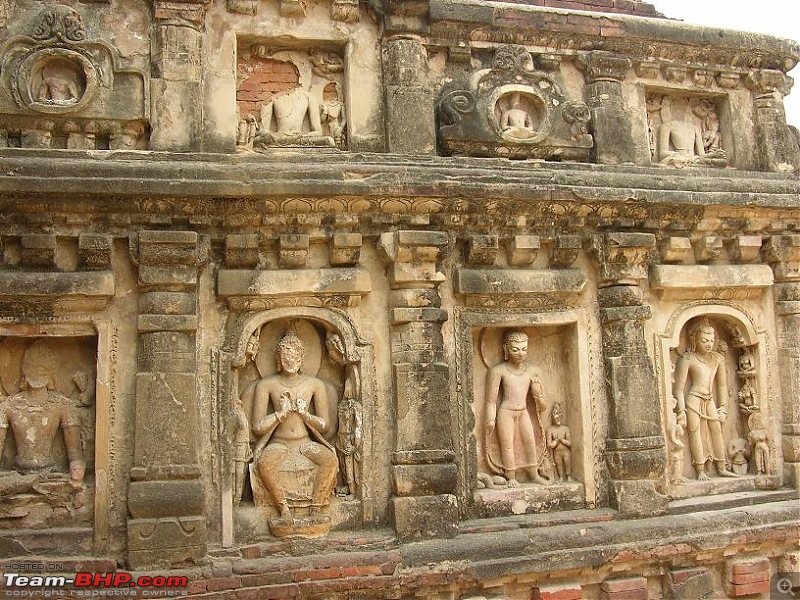 The famed stucco images from Gupta period   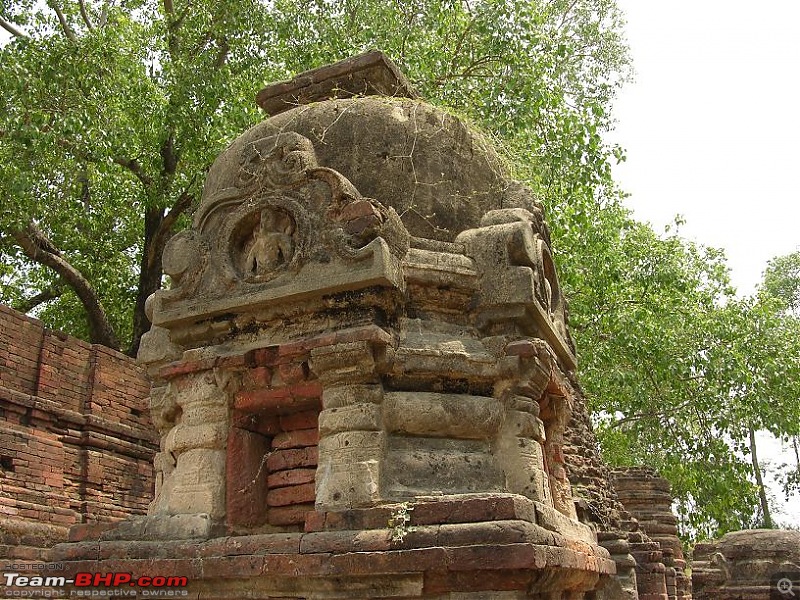 A unique votive stupa that has room for idol worship  And now coming to the great British archaeologist - Sir Alexander Cunningham; the pictures below will tell you his monumental contribution to the people of India. 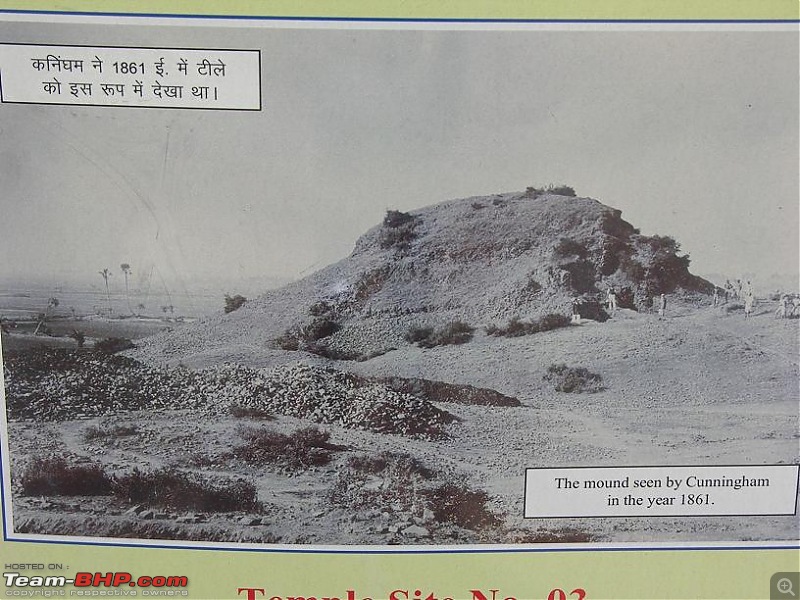   To be continued… |
| |  ()
Thanks ()
Thanks
|
 |



 .
.